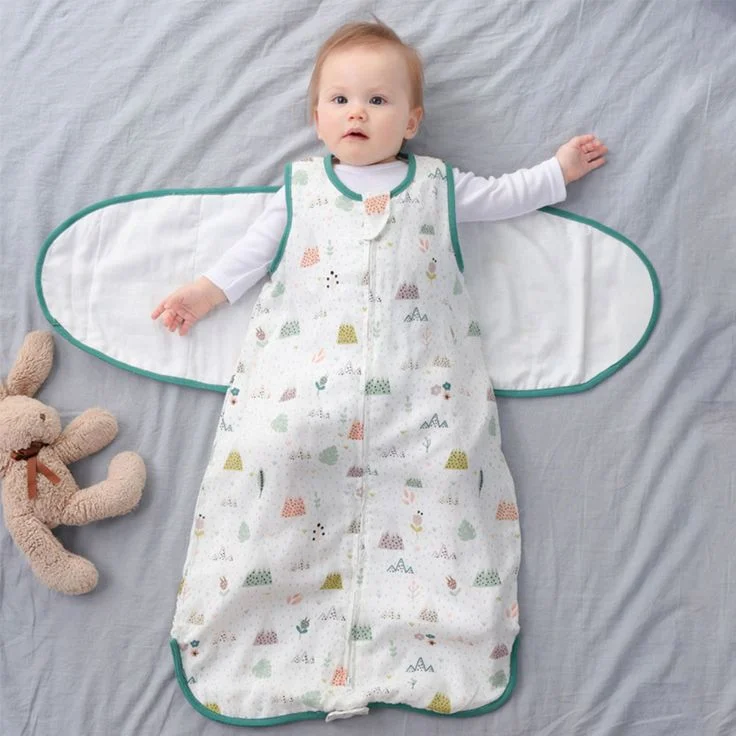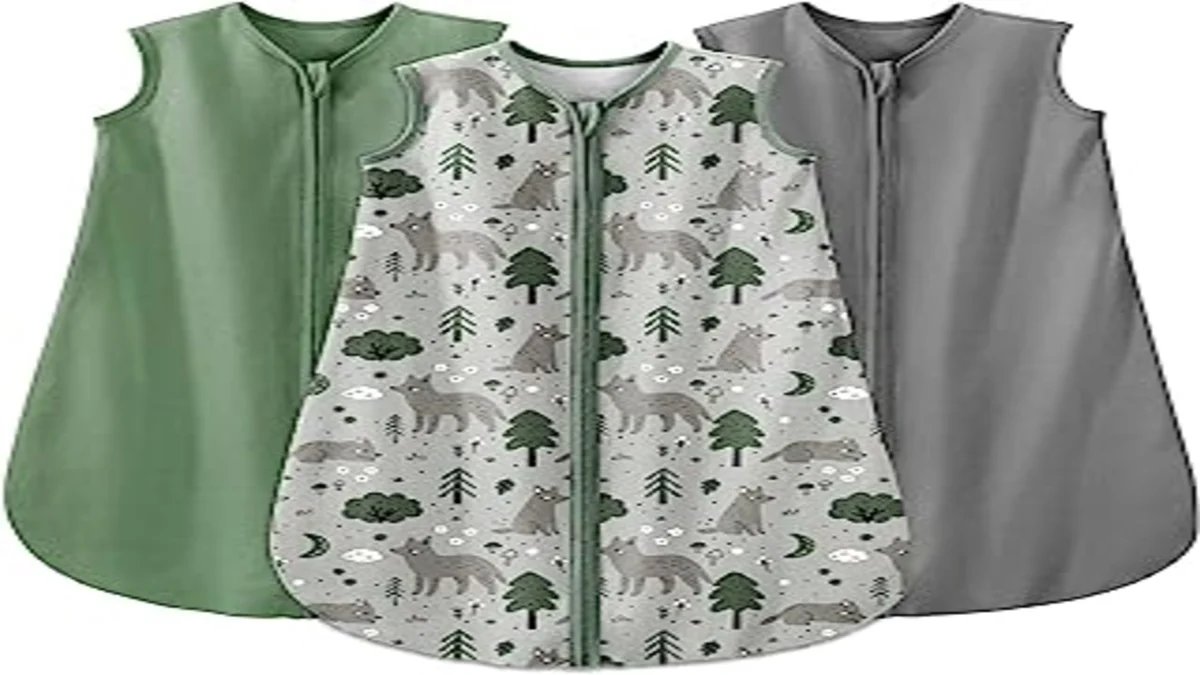Looking for the perfect sleep sacks to enhance your slumber? This comprehensive guide covers everything from benefits to types of sleep sacks available.
With so many options available in the market, it can be overwhelming to choose the right sleep sack for your needs. From materials to sizes and features, there are a lot of factors to consider before making a purchase. Whether you’re a frequent camper, a restless sleeper, or just looking to elevate your bedtime routine, sleep sacks are a versatile and essential item that can transform your slumber experience.
What is a Sleep Sacks?

Suppose your infant is curled up in their superhero cape, only this time, instead of rescuing the world, they’re overcoming sleep. Similar to wearable baby blankets, sleep sacks are constructed of supple, breathable material, feature arm openings, and a convenient zipper or snap to secure everything in place.
Throw away such outdated, loose blankets that could suffocate a person. Sleep sacks are made to protect and secure your child as they drift off to sleep. It’s similar to swaddling done in a modern style but without the hassle or excess cloth.
Therefore, think about including a sleep sack in your baby’s superhero costume if you’re seeking a safe and effective way to assist them in sleep. They’ll be grateful to you afterward!
The benefits of a sleep sack
Safety: By removing the need for unsecured bedding in the crib, sleep sacks lower the danger of SIDS or sudden infant death syndrome. A newborn can inadvertently cover their face with a regular blanket and have breathing difficulties, but sleep sacks offer a safe and comfortable sleeping environment.
Comfort: Sleep sacks give babies a warm, comfortable place to sleep that simulates being swaddled. This can help calm infants and encourage deeper, more peaceful slumber.
Easy to Use: Sleep sacks don’t require intricate swaddling procedures because they are easy to use. With a sleep sack, parents don’t have to worry about their infant escaping throughout the night.
Temperature Control: A lot of sleep bags are made of permeable materials and are available in a range of thicknesses to accommodate varied weather conditions. They prevent babies from overheating or freezing by helping to maintain a comfortable body temperature throughout the night.
Mobility: Sleep sacks keep firmly in place, ensuring that babies stay warm and covered throughout the night, even if they move around in their crib, in contrast to regular blankets, which babies can easily kick-off during sleep.
Transition Aid: Sleep sacks can also be used to help newborns make the switch from swaddling to sleeping unwrapped. They give newborns freedom of mobility and a familiar, soothing feeling at the same time.
Overall, sleep sacks offer a safe, comfortable, and convenient sleeping solution for babies, providing peace of mind for parents and promoting better sleep for little ones.
What does a sleep sack do?
With the use of sleep sacks, your baby’s body temperature can be adjusted to ensure that they are neither too hot nor too cold while they sleep. Additionally, a sleep sack reduces the need for additional blankets in a baby’s bassinet, crib, or co-sleeper, which helps keep their sleeping area secure, according to the American Academy of Pediatrics (AAP).
Do sleep sacks help babies sleep?

They should, in a word—well, that’s two words! Though each baby is unique, Dreamland Baby’s weighted sleep sacks are effective for babies who enjoy being caressed. Babies benefit from weighted sleep sacks because they feel safe and “held,” much like an embrace, which soothes fidgety infants.
Remember that weighted sleep bags are thought to be safe as long as they don’t weigh more than 10% of your baby’s total weight. Thus a one-pound sleep sack is the ideal choice for a baby weighing ten pounds or less. A sleep sack should weigh no more than two pounds on a 20-pound baby, and so on.
When should a baby use a sleep sack?
Babies from birth to toddlerhood benefit from sleep sacks, yet each infant is unique. Using your sleep sack for naps and nights also contributes to the development of a habit and a dependable “sleep time” schedule.
How to choose sleep sacks for babies?
Size: Make sure the size you choose is adequate for the weight and age of your infant. To accommodate newborns, infants, and older babies, most sleep sacks come in various sizes. Snug around the neck and armholes, a properly fitting sleep sack will keep no cloth from obscuring your baby’s face.
Material: If you live in a warmer environment, choose sleep sacks made of lightweight, breathable materials like bamboo or cotton. Think about using thicker materials or sleep sacks with fleece linings in colder locations to add extra warmth.
TOG grade: The sleep sack’s degree of warmth is indicated by the Thermal Overall Grade (TOG) grade. Select a TOG grade that is suitable for the temperature of the room in which your infant will be sleeping. For the majority of room temperatures, TOG ratings between 0.5 and 2.5 are often appropriate.
Zipper Design: For simple diaper changes, look for sleep sacks with a zipper that goes from top to bottom or bottom to top. Additionally, some sleep sacks have zipper covers or inverted zippers to keep your baby’s skin from becoming irritated.
Features for Safety: Verify that the sleeping bag satisfies all applicable safety requirements. Seek for products that have passed safety tests for flammability and other risks, and that are free of potentially toxic ingredients.
Design: Take into account any extra features or styles that might fit your demands or your baby’s, including sleeveless versus long sleeves, shoulder strap adjustments, or newborn-like patterns.
Ease of Care: Verify that the sleep sack is simple to clean and maintain by consulting the care instructions. While the majority of sleep sacks may be machine-washed, some could need special handling.
By considering these factors, you can choose a sleep sack that provides comfort, safety, and convenience for your baby’s sleep needs.
When to stop using a sleep sack?
The moment will come for newborns to move out of the sleep sack, just like with the swaddle. When parents decide to quit using a sleep sack, they consider a few different things.
First, the size of a baby. Premature to extra large are the most common sizes for sleep sacks; XL sleep sacks may fit children up to 36 pounds in weight and 40 inches in length. Babies achieve this limit at different times; some may do so as early as 18 months, while others may not reach it until they are 2 years old. In any case, it’s time to think about moving out of the sleep sack if the largest one no longer fits.
The length of time your baby wears the sleep sack will also depend on how comfortable they are with it. Some newborns prefer to wear their wearable blankets for as long as possible because they feel so secure wearing them. Others will be attempting to escape all the time thanks to their increased mobility. It may be time to switch to something different if your baby is starting to act uncomfortable in the sleep sack or struggles to get it on in the first place.
Additionally, you ought to consider it from a safety perspective. For the first year in a child’s crib, the American Academy of Pediatrics advises against using loose blankets. In light of this, a lot of parents use sleep sacks until their child turns one, and some even use them throughout toddlerhood.





